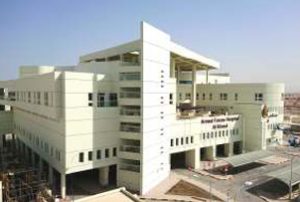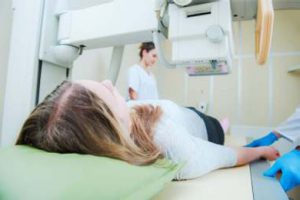 Current healthcare expenditures in Oman are expected to grow at a CAGR of 9.1 percent from $3.2 billion in 2017 to $4.9 billion in 2022, according to a report published by Alpen Capital
Current healthcare expenditures in Oman are expected to grow at a CAGR of 9.1 percent from $3.2 billion in 2017 to $4.9 billion in 2022, according to a report published by Alpen Capital
The Sultanate of Oman, resides on the southeastern coast of the Arabian Peninsula in Western Asia. The country borders with the UAE to the northwest, Saudi Arabia to the west, and Yemen to the southwest, and shares marine borders with Iran and Pakistan.
The Sultan Qaboos bin Said al Said has been the hereditary leader of the country, an absolute monarchy, since 1970. Sultan Qaboos is the longest-serving current ruler in the Middle East, and third longest current reigning monarch in the world.
Healthcare sector
Oman is a member of the UN, the Arab League, GCC, the Non- Aligned Movement and the Organization of Islamic Cooperation. It has sizable oil reserves, ranking 25th globally. In 2010, the United Nations Development Program ranked Oman as the most improved nation in the world in terms of development during the preceding 40 years. A significant portion of its economy involves tourism and trade of fish, dates and certain agricultural produce. Oman is categorized as a high-income economy and ranks as the 69th most peaceful country in the world according to the Global Peace Index.
The country has invested heavily in the health sector and succeeded in creating a relatively modern health care system over the last 40 years. Health indicators attest to its comprehensive and well-developed standards. At the same time, the government’s determination to provide all its citizens with free, basic health care, along with treating persistent diabetes and cardiovascular disease, means that health-related expenditures are growing.
According to reports published by the Oxford Business Group at the end of 2016, the Ministry of Health (MoH) had 74 hospitals with a total of 6589 beds (equivalent to 14.9 beds per 10,000 people) as well as 266 governmental health centers, clinics, and pharmacies, and 1105 private clinics. Government-run hospitals for the general Omani public accounted for 49 hospitals and 4659 beds, while the private sector accounted for 15 hospitals with 637 beds. The rest of the hospitals are operated by the Royal Armed Forces, the Royal Oman Police, and Sultan Qaboos University. Despite the fact that Omanis can be treated without charge in government hospitals, some choose to visit private hospitals in order to avoid wait times. The government typically reimburses private hospitals for their care. Although the government generally pays for specialized treatment abroad for Omani citizens, in November 2017, the MoH announced only patients suffering from chronic or acute ailments who cannot be treated domestically will be allowed to go abroad for treatment. Over the past five years, there has been a 56 percent drop in the number of patients sent abroad for treatment according to MoH data. The preferred destinations for most Omanis are India, Thailand and Europe. Omanis consider US health care expensive and the few who do go there have friends or family and travel at their own expense. The MoH does not usually refer patients to American hospitals.
Current healthcare expenditures in Oman are expected to grow at a CAGR of 9.1 percent from $3.2 billion in 2017 to $4.9 billion in 2022, according to a report published by Alpen Capital. This growth is due to a rising population and the rising cost of care. To accommodate the growing base of patients, the bed requirement in Oman is anticipated to grow at a CAGR of 3.2 percent through 2022, translating into a demand for more than 1,100 new beds to reach a capacity of 7,937 beds.
In November 2017, the MoH announced contracts to build three new hospitals in Salalah, Khasab, and Suwaiq. The Royal Oman Police will construct a new 4,600 bed hospital over the next three years, requiring equipment, management services, and drug imports. In the private sector, Badr Al Samaa group started work on a new 100-bed hospital in Sohar. Large scale projects such as the $1 billion International Medical City (IMC) in Salalah, and the Medical City in Barka by the MoH have been on hold.
 Medical innovation in process
Medical innovation in process
Oman has been pushing for the implementation of modern technological solutions to boost efficiency in the health care sector and ultimately keep costs down and cut waiting times. This has been notable in the digitization of the country’s medical records, with 86% of all government hospital and health care facilities having been linked electronically to a central database by the beginning of 2015. In early January 2017 the Ministry of Health began implementing a cashless transaction system at public health care centers, with both primary clinics and government hospitals now accepting card payments.
Moreover, the Ministry of Health has been reducing the prices of the most commonly used medicines in Oman, in phases over the past years. In June 2015, Ministry of Health revised the prices of 1,180 drugs including those of respiratory system diseases, psychiatric, ENT, eye, cancers, blood diseases and vaccines. This program is in line with the resolution passed at the 72nd meeting of the GCC Health Ministers, held in Muscat on January 4, 2012, to standardize the import prices of medicines. In April 2017, a 45 percent profit cap on medicines was introduced by the Ministry of Health.
The Omani government currently spends more than $260 million a year on medicines and supplies, with more than 93% of medical supplies, including laboratory, surgical equipment and pharmaceuticals, needing to be imported from abroad. There is an ongoing push to establish more pharmaceuticals operations in Oman. The development of the domestic pharmaceuticals industry, could also offer a host of new opportunities.
According to the Ministry of Health, Oman imports more than 90 percent of medicines and surgical supplies consumed in the country. The Ministry of Health is striving to reduce the reliance on imported medicines by encouraging domestic medicine industry which is still considered a small sector but has seen some growth in the past years. Currently there are two local drug-makers and only one company for surgical supplies.
Establishing interconnectivity
Oman is focused on upgrading its facilities and diagnostic capabilities. The Ministry of Health has expressed interest in US healthcare information management technologies as part of its efforts to standardize operations and establish interconnectivity among Oman’s hospitals and regional clinics.
Consequently, current healthcare expenditure on outpatient and inpatient services in Oman is projected to grow at an annualized average rate of 10 percent to $1.5 billion and $2.3 billion, respectively, by 2022. To accommodate the growing base of patients, the bed requirement in Oman is anticipated to grow at a CAGR of 3.2 percent through 2022, translating into a demand for more than 1,100 new beds to reach a capacity of 7,937 beds.
The Ministry of Health has outlined other requirements including a full-fledged EMS / ambulance system, innovative health insurance solutions for the 2 million expat population (and eventually for citizens, currently covered by the government), customized patient catering plans, and help with recruitment to address Oman’s severe shortage of doctors. The Ministry of Health has also expressed specific interest in U.S. healthcare information management technologies as part of its efforts to standardize operations and establish interconnectivity among Oman’s hospitals and clinics.
The Ministry of Health has also repeatedly stressed the need to develop innovative health care financing and insurance solutions, as the government cannot continue to sustainably finance the majority of health care in the Sultanate. The Oman Chamber of Commerce and Industry, a government body representing the Omani private sector, has been pushing for mandatory health insurance for private sector employees and wishes to implement it by 2019. Under the FTA, US insurers in Oman can establish a commercial presence through subsidiaries, branches, or joint ventures, and provide a full range of insurance products. U.S. providers are also assured a swih approval of new products (30 days for non-life insurance and 60 days for life insurance). The insurance market in Oman is small, but will likely grow, particularly the health insurance market, and the FTA positions U.S. providers to be more competitive.
Smart digital solutions
Omantel, the front-runner in telecommunications and ICT in the Sultanate, has joined hands with Siemens to bring smart solutions (smart hospitals) to the country’s health care sector.
Omantel aims to use its expansive state-of-the-art ICT infrastructure to bring advanced solutions to health care practitioners and provide better outcomes for the patients.
Siemens, a robust name in infrastructure digitalization among many other specialties, showcased the advanced capabilities of eHealth & Smart City Solutions at Omantel’s 3rd Annual ICT Summit which took place in November.
urthermore, continuing Omantels strategic direction towards the Sultanates digital transformation, the tie-up stands to hugely benefit the public and private health care sectors as it opens the doors to host of revolutionising solutions aimed at enhancing productivity, boosting efficiently and flexibility, transparency, compliance, safety and security.
 To achieve these goals under the defined scope, the partnership will work together using four broad cases: improved patient outcomes through circadian lighting, improved staff productivity through patient tracking and asset tracking and quicker information on emergencies. Circadian lighting regulates activity patterns of the brain in humans as per natural light available in the 24-hour pattern. Simulating circadian lighting in health care has shown proven results with improved patient performance to treatment, health and safety.
To achieve these goals under the defined scope, the partnership will work together using four broad cases: improved patient outcomes through circadian lighting, improved staff productivity through patient tracking and asset tracking and quicker information on emergencies. Circadian lighting regulates activity patterns of the brain in humans as per natural light available in the 24-hour pattern. Simulating circadian lighting in health care has shown proven results with improved patient performance to treatment, health and safety.
A tracking system will help monitor the patient in and out of the health care facility, and will be able to inform/warn health institutions about emergencies, if any.
Asset tracking systems, meanwhile, is a digital way to track inventory across departments in hospitals and clinics and reduce costs due to loss, damage, and theh. These systems improve the inventory management processes, thus saving precious time and enhancing staff productivity.
With these introductions, Omantel will be successfully integrating ICT with public service through health care in Oman.
Moreover, Sheikh Abdullah Salim al Salmi, executive president, Capital Market Authority (CMA), recently issued a decision, making amendments to the Unified Health Insurance Policy ‘Dhamani’.
The amendments will now include domestic workers in Dhamani, thereby encouraging their employers to provide high quality and cost-effective healthcare, apart from the basic benefits provided by certain embassies for their respective communities.
He pointed out that such amendments were made following discussions with the community and the stakeholders in cooperation with the Ministry of Foreign Affairs (MOFA) and the representatives of the concerned embassies.
Al Salmi said the Dhamani scheme has reached high level of preparedness in the legislative and regulatory structure to pave the way for actual implementation adding that health insurance rules and standard health insurance policy are ready and that drah amendments to certain provisions of the insurance companies law are in their final stages and the health insurance database has been officially launched. He added that the electronic platform of Dhamani which links the insurance companies, health care institutions and the regulators has been awarded.
Furthermore, Oman- based IRIS Health Services recently introduced future-tech solutions to more than 100 hospitals, pharmacies and clinics across Oman. AI, Blockchain and other tech will improve consumer access to quality care and resource efficiency for providers and strengthen the insurance sector. The digital solutions include electronic health cards, real-time eligibility checks, e-pharmacy lists and a Physicians Support Tool, benefiting everyone involved in the health insurance ecosystem from consumers to insurance companies to regulators and providers.
The IRIS solution also generates instant insurance e-cards with benefit information such as deductible and co-payment details clearly visible, as well as standardised claim forms – together, these two processes alone increases efficiencies for the health ecosystem.
As a goodwill gesture, IRIS is currently providing its Physician Support Tool and related training for free to all the medical service providers in its network in Oman. The Support Tool allows physicians to code diagnoses according to World Health Organization and other international standards at the touch of a button without the need for specialist coders or knowledge.











